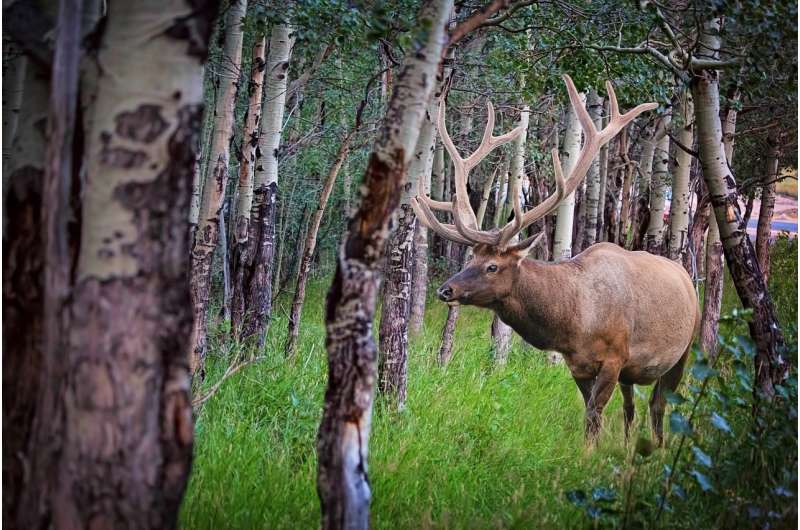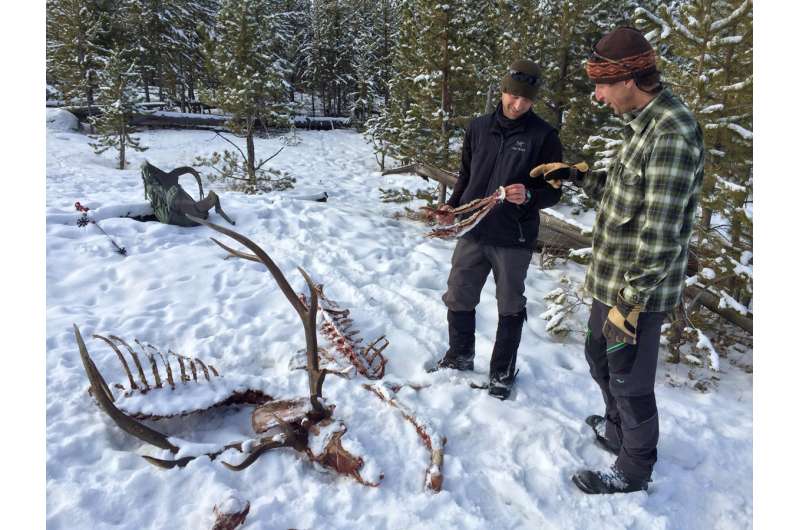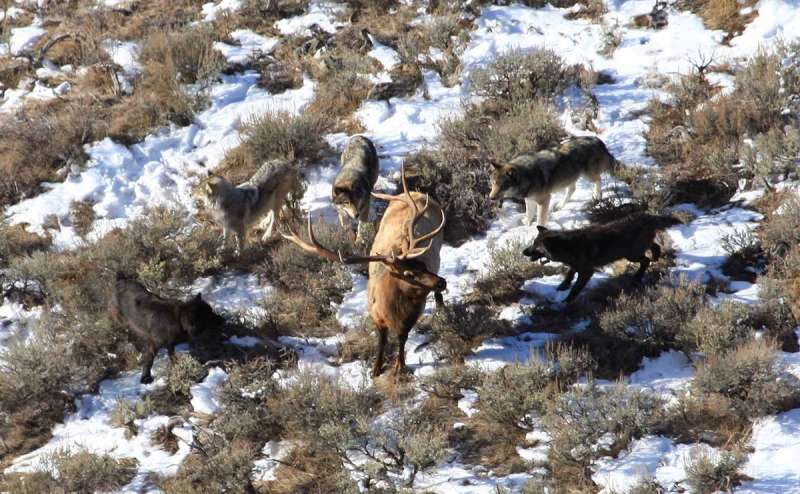September 5, 2018 report
Male elk face a trade-off regarding when to drop their antlers

A team of researchers affiliated with several institutions in the U.S. has found that male elk face a trade-off regarding the appropriate time to drop their antlers. In their paper published in the journal Nature Ecology and Evolution, the group describes their 13-year study of elk living in Yellowstone National Park—and the wolves that hunt them.
In North America, a type of large red deer known as elk live in many wooded areas across the continent—one of the most prominent of these areas is Yellowstone National Park. Male elk are known for their large rack of antlers, which they shed once each year. Prior research has shown that the main purpose of the antlers is to fight other males for reproductive rights with females. The researchers with this new effort have found that a second purpose is to ward off predators such as wolves. They also found that a timing issue related to antler dropping has led to a trade-off for the male elk.
In their long study of the elk living in the park, the researchers found that wolves preferred to attack the elk after they had dropped their antlers—the sharp tines and thick neck muscles together presented a formidable means of defense. But they also found that the males did not drop their antlers at the same time—the earlier a male dropped his antlers, the more time his new set would have to grow, allowing them to grow bigger than other competing males. Dropping their antlers had a major drawback, however—it made those individual members stick out among their peers as a prized target for hungry wolves. It also put other males around them at greater risk. The researchers found that if a group of males had just one antlerless member, it was 10 times more likely to be attacked by wolves.

The researchers note that the trade-off experienced by the male elk goes against the traditional idea that wolves attack the young, weak or ill—males that cast off their antlers early are actually more robust than other males that still retain their rack. This is because the antlers are heavy and thus force the expenditure of a lot of energy—elk without antlers that eat the same amount as other males with antlers become comparatively bigger and stronger.

More information: Matthew C. Metz et al. Predation shapes the evolutionary traits of cervid weapons, Nature Ecology & Evolution (2018). DOI: 10.1038/s41559-018-0657-5
Abstract
Sexually selected weapons evolved to maximize the individual reproductive success of males in many polygynous breeding species. Many weapons are also retained outside of reproductive periods for secondary reasons, but the importance of these secondary functions is poorly understood. Here we leveraged a unique opportunity from the predator–prey system in northern Yellowstone National Park, WY, USA to evaluate whether predation by a widespread, coursing predator (wolves) has influenced a specific weapon trait (antler retention time) in their primary cervid prey (elk). Male elk face a trade-off: individuals casting antlers early begin regrowth before other males, resulting in relatively larger antlers the following year, and thus greater reproductive success, as indicated by research with red deer. We show, however, that male elk that cast their antlers early are preferentially hunted and killed by wolves, despite early casters being in better nutritional condition than antlered individuals. Our results run counter to classic expectations of coursing predators preferring poorer-conditioned individuals, and in so doing, reveal an important secondary function for an exaggerated sexually selected weapon—predatory deterrence. We suggest this secondary function played a key evolutionary role in elk; uniquely among North American cervids, they retain their antlers long after they fulfil their primary role in reproduction.
Journal information: Nature Ecology & Evolution
© 2018 Phys.org




















